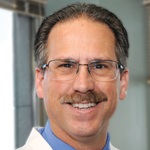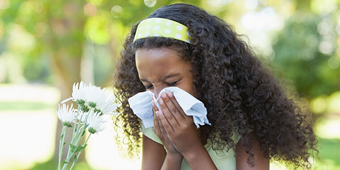Astroworld Aftermath: Tips For Staying Safe In Large Crowds

Find Your Perfect Match
Answer a few questions and we'll provide you with a list of primary care providers that best fit your needs.
The Who concert tragedy in 1979…the stampede during Pearl Jam’s performance in Denmark in 2000…and now multiple deaths and injuries at the Astroworld Music Festival in Houston. Each raises questions about why people died and what people can do to protect themselves from harm.
Emergency physician Randy Marriott, MD, medical director of the Premier Health EMS Center of Excellence, talked with Premier Health Now about actions all of us can take to avoid dangerous situations fueled by large, uncontrolled crowds.
He notes that the most serious threat of a surging crowd is suffocation. Minor injuries, such as passing out, scrapes, cuts, or injured limbs are more common and treatable.
“Suffocation can occur when the pressure of the crowd is so great that you can’t expand your lungs,” he says. It can happen whether you have fallen down or are standing.
Dr. Marriott references crowd density standards to describe how many people can occupy a given space: “If you have five people per square meter — a little over a square yard — it’s uncomfortable. If you have eight people per square meter, injuries are guaranteed.”
He offers some safety strategies for teens and adults:
Be informed before you buy your ticket. If your teen is pleading to go to an event, “Take into account the age and size of your teenager,” Dr. Marriott says. “Do some research into the history of the promoter, performer, and venue.” If the risks seem significant, “Just don’t go.”
Be aware of your surroundings. Once you’re at a concert venue, pay attention to exit points and know where you can get out if you have to. “If you start feeling people pushing your shoulders from both sides and you’re having trouble moving, get out if and while you can.”
Stay upright and don’t place objects on the ground. Once a person falls, it can be extremely difficult to stand back up. Staying upright protects you from being trampled by a wave of people. Dr. Marriott strongly suggests not putting bags or backpacks on the ground, which can be obstacles that can trip you or other people.
Stay away from solid barriers. Concrete and metal have no give and can cause you to be crushed, with no place to go and no room to breathe.
Create your own breathing space. When surrounded by a dense, moving crowd, cross your arms in front of you and hold them slightly away from your chest. Dr. Marriott notes, “Even a centimeter of space allows your lungs to move and breathe.”
Go with the flow. If it’s too late to exit, move with the crowd rather than pushing back. Contribute to a spirit of cooperation and help people where you can. “A benevolent mood is contagious,” Dr. Marriott says. “People will rise to the occasion to help each other.”
How Medical Responders Can Help
Dr. Marriott recalls heavy metal concert events in Dayton called X-Fest, which started in the early 2000s and continued through 2011. He noted an influx of casualties into the emergency department (ED) during the first event, which drew thousands of people.
“After the first year, we organized better and had ED physicians onsite to monitor head injuries and other wounds,” he says. “The onsite care prevented a lot of people from having to go to the hospital, and we had a better system for transporting those who did need hospital care.”
He says Miami Valley Hospital and surrounding regional hospitals have plans in place to coordinate multiple casualty incidents, such as a concert crowd that’s out of control.
He encourages people with medical training to step forward to help if they find themselves in a multiple-emergency situation.
In crowd-related incidents where suffocation is an issue, he notes that many victims are young, healthy individuals at baseline. “If someone’s main issue is lack of oxygen, try mouth-to-mouth resuscitation and chest compressions. Don’t follow normal triage systems that recommend moving past someone who isn’t breathing. Instead, use reverse triage and gravitate to those not breathing.”
Even bystanders with a little bit of knowledge can offer assistance that may save someone’s life.
Find Your Perfect Match
Answer a few questions and we'll provide you with a list of primary care providers that best fit your needs.





